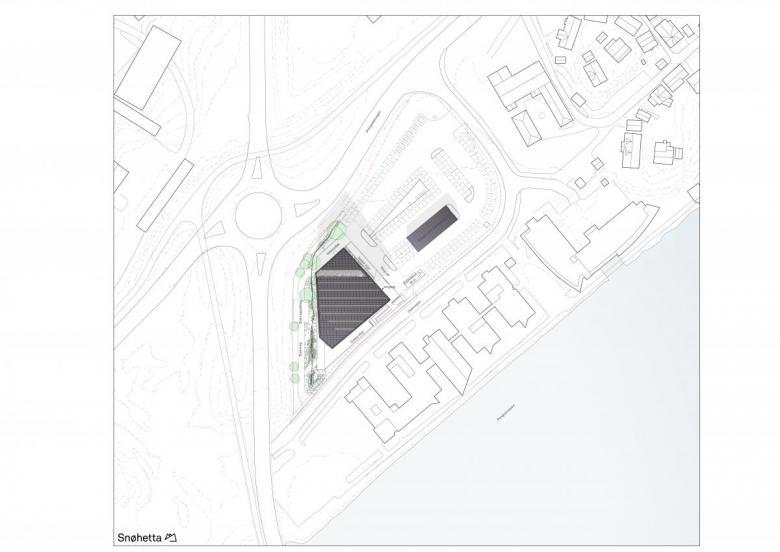An Energy-Positive Future
Architecture must change in order to address the climate crisis. But what directions do architects want to take? Snøhetta is making an interesting contribution to the debate: In southern Norway, the firm has designed an office building that produces more energy than it consumes over its life cycle — taking into account the carbon footprint of construction, demolition, and building materials.
Impressive figures show just how much responsibility buildings contribute to climate change: 40% of global CO2 emissions are attributable to the construction industry, which is also responsible for a large proportion of waste and devours 50% of all finite resources. Not to mention the fact that the continued consumption of land for new buildings endangers biodiversity and accelerates the extinction of species. To avert the climate catastrophe, everyone is called upon to help; a profound change in values is needed.
As architects, we have the opportunity to make a significant contribution to improving the situation — this is also how the Norwegian firm Snøhetta sees it. The team of Snøhetta, Entra, Skanska, ZERO, and Asplan Viakbegan began developing energy-positive buildings in the early 2010s, and the fourth "Powerhouse" is now complete. Located in the industrial city of Porsgrunn, 160 kilometers south of Oslo, the developer of the 8,400-square-meter office building is R8 Property. It is designed to produce more energy than it consumes over its lifetime (calculated to at least 60 years), taking into account demolition, construction, and the production of the materials used. The building generates around 256,000 kilowatt hours of electricity annually — twenty times the energy requirement of an average Norwegian household. But how does it work in detail?
Located in the immediate vicinity of the Herøya industrial estate, Powerhouse Telemark houses offices, numerous co-working workplaces, various meeting rooms, a restaurant, and a roof terrace with a beautiful view over the fjord. On its roof, which is inclined by 24 degrees, as well as on the southeast facade, is what is currently the most effective solar power plant installed in Norway. At the same time, the energy requirement has been reduced by 70 percent compared to normal office buildings in Scandinavia. To achieve this, the floor plans of the highly insulated building, for example, were designed in such a way that significantly less artificial light is required. Glass slits in the roof, through which light penetrates the top three floors, also contribute to this.
The interiors are highly standardized so that waste is avoided as much as possible when tenants change. Floors, glass walls, partitions, kitchenettes, and sanitary facilities are uniformly designed. Even a special foil system has been developed so that no unnecessary waste is generated when labels are changed. Additionally, the architects placed an emphasis on durability and recycling of the materials: the carpet tiles, for example, consist of 70% discarded fishing nets from the region, and the parquet flooring was made from wood waste.
The Powerhouse was designed with a concrete skeleton construction, with the concrete serving as a storage mass; heating and cooling is provided passively by a geothermal system. In order to reduce the quantity of building materials, which is problematic because of its environmental balance, the architects, in cooperation with the client, opted to forego having a basement for the building.
We live in times of dramatic change. But the building industry as a whole — and unfortunately often also architects — is still stuck in another time. Faced with great challenges, there is the possibility, indeed the necessity, to reinvent our discipline. Inventiveness, creativity, and pioneering spirit are required as rarely before. It is also important to have an open, high-quality discourse about projects and approaches to solutions. Snøhetta's construction is a remarkable contribution that displays interesting ideas in physical terms, but it also brings social, political, and cultural issues to mind. For example, how and where will we work in the future if buildings are to be used as efficiently as possible? Snøhetta, at any rate, assumes the demand for co-working spaces will increase significantly.











